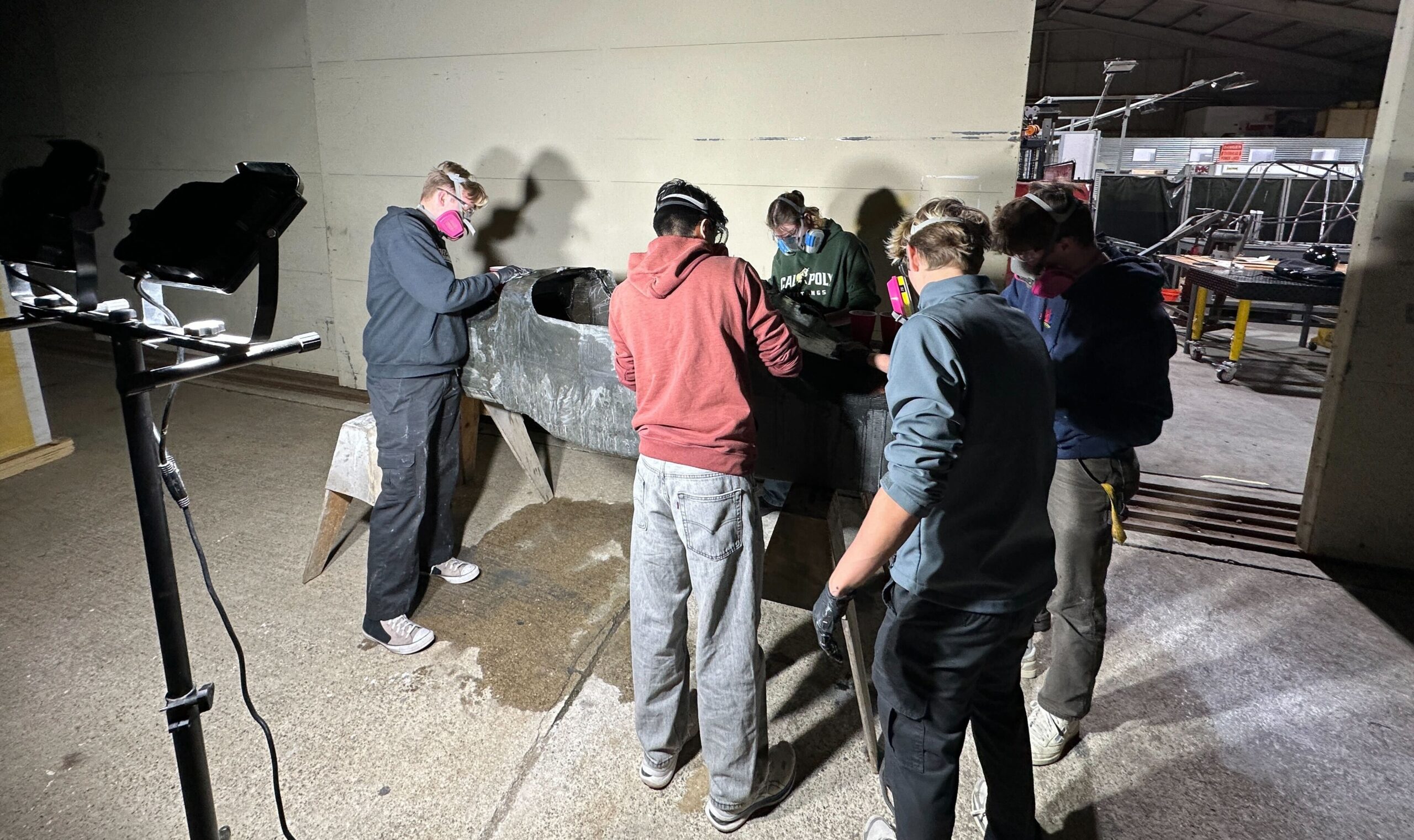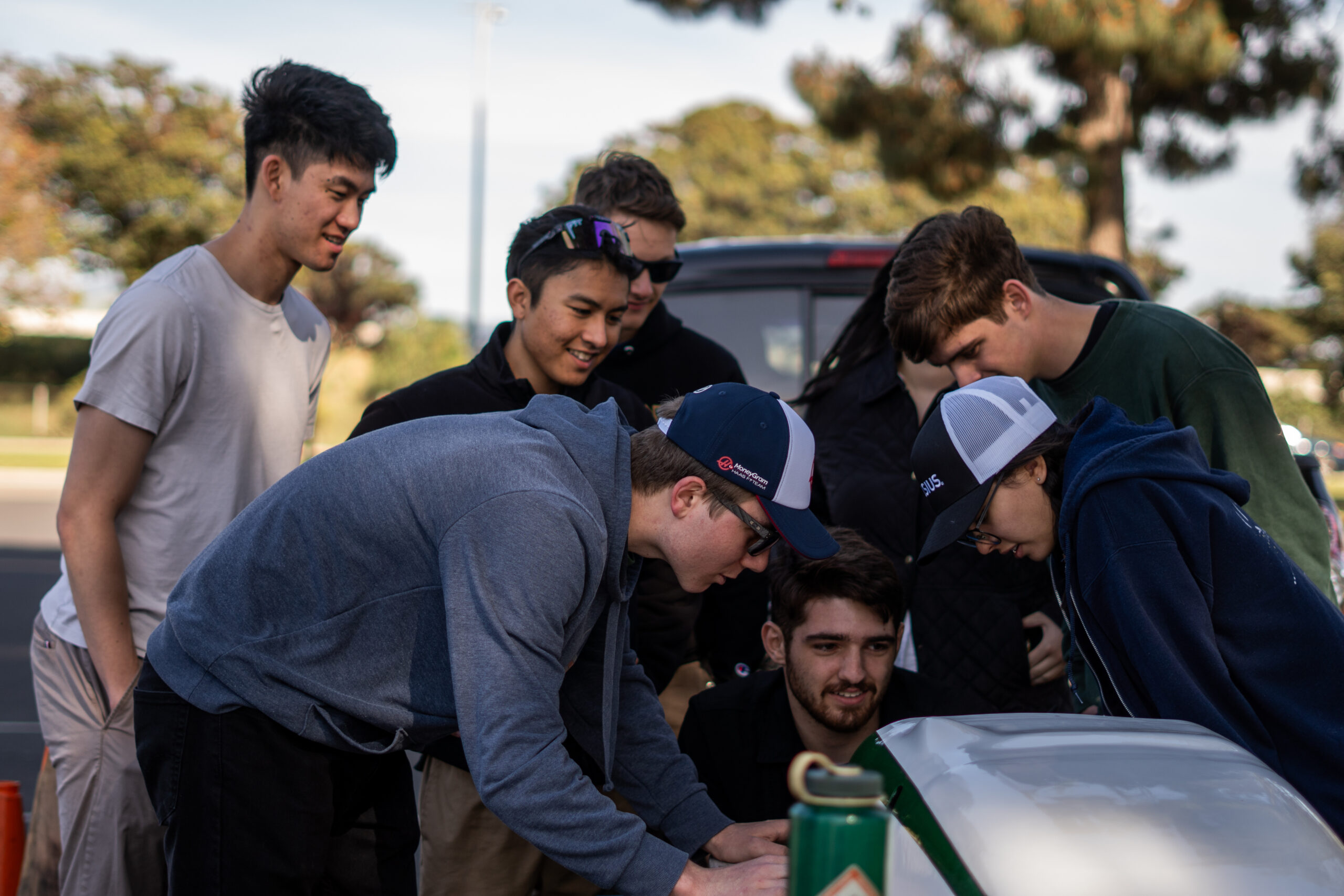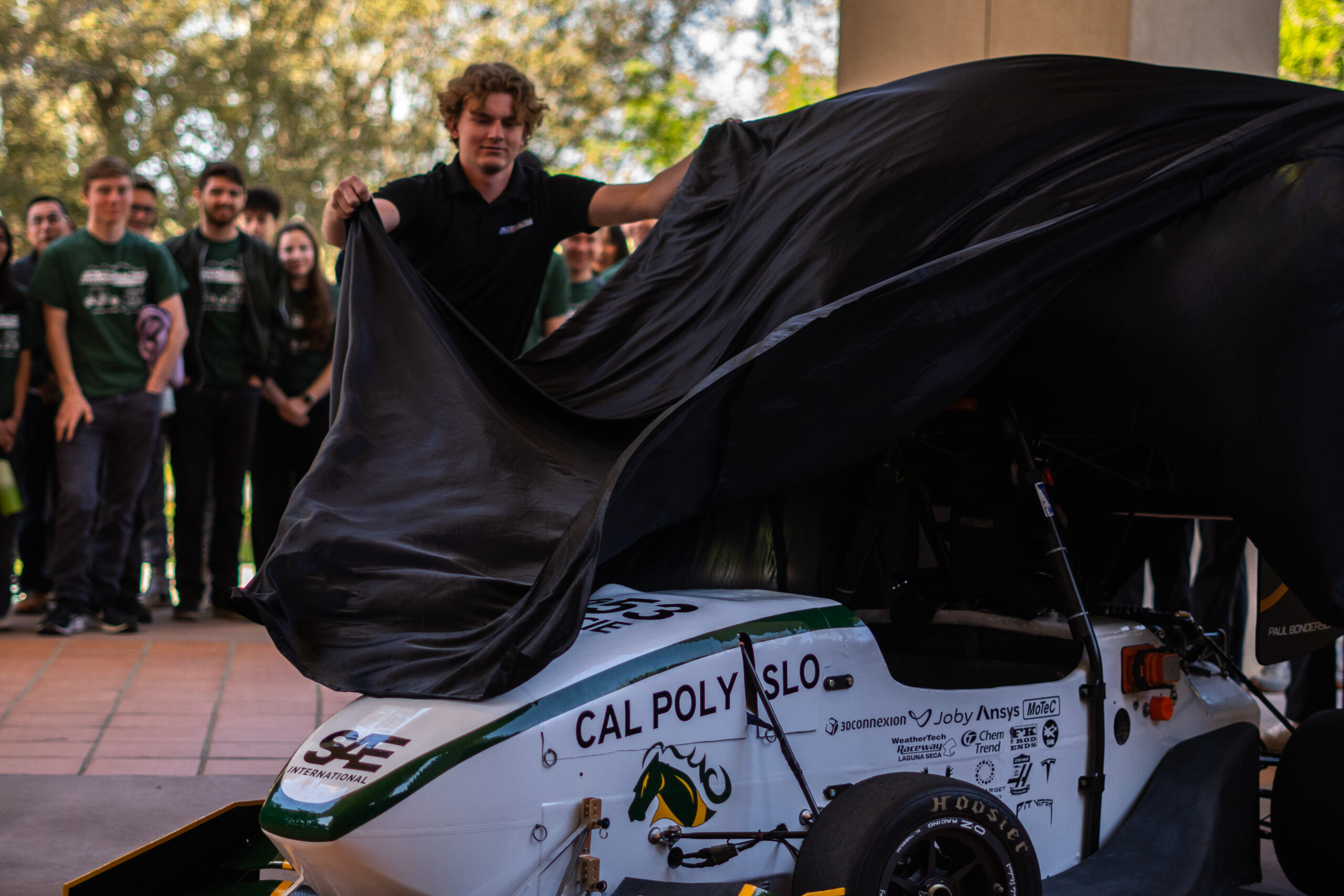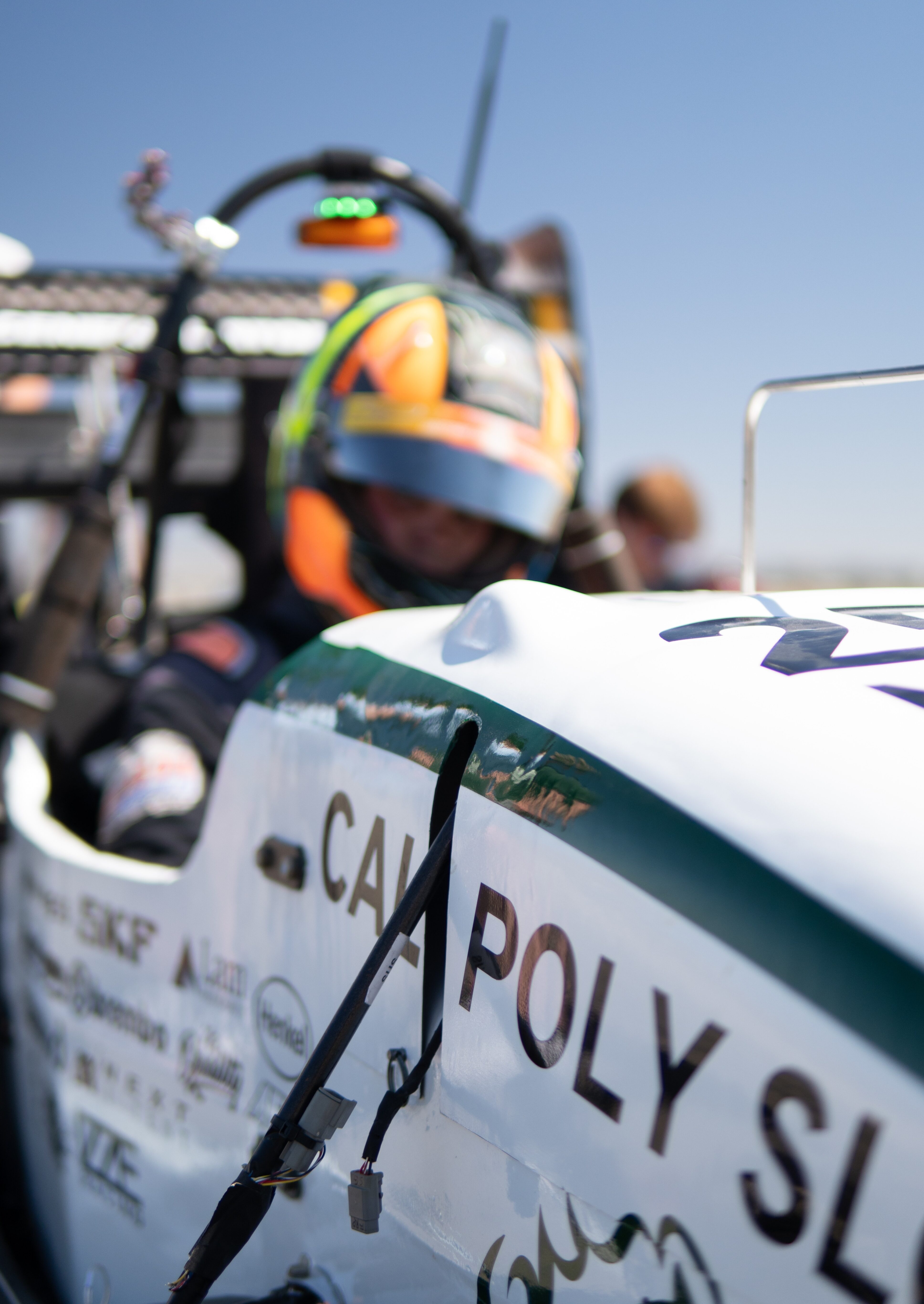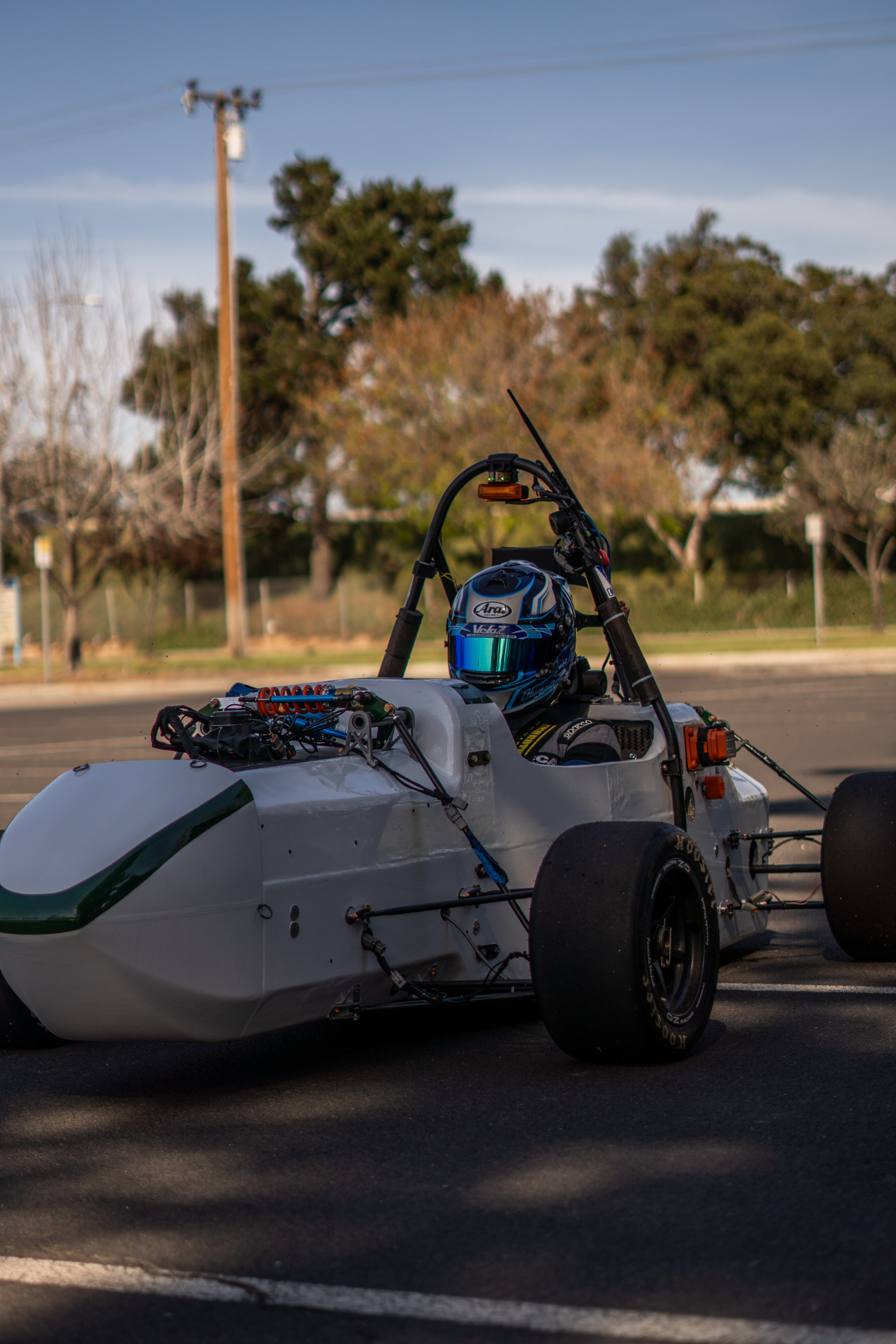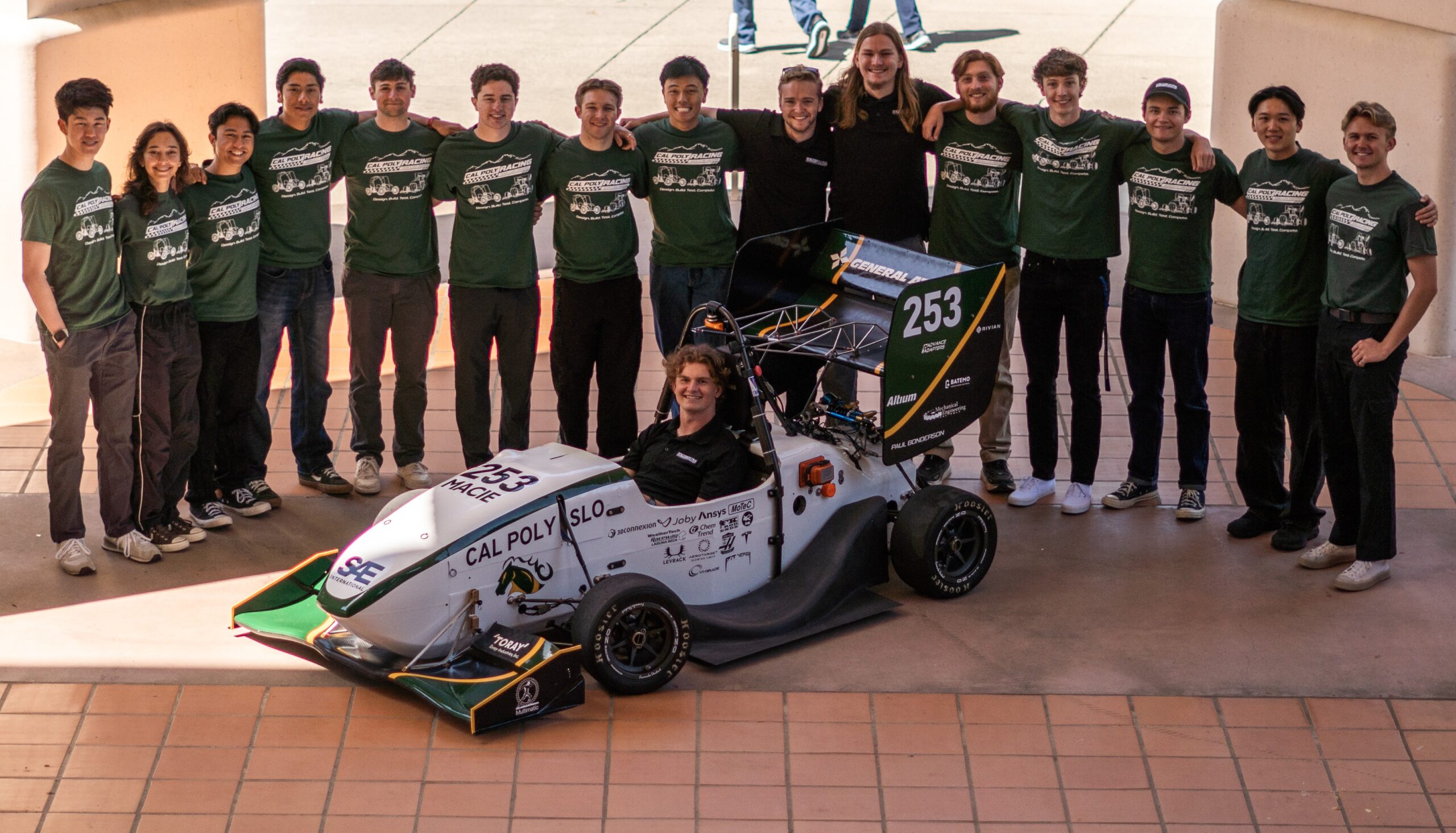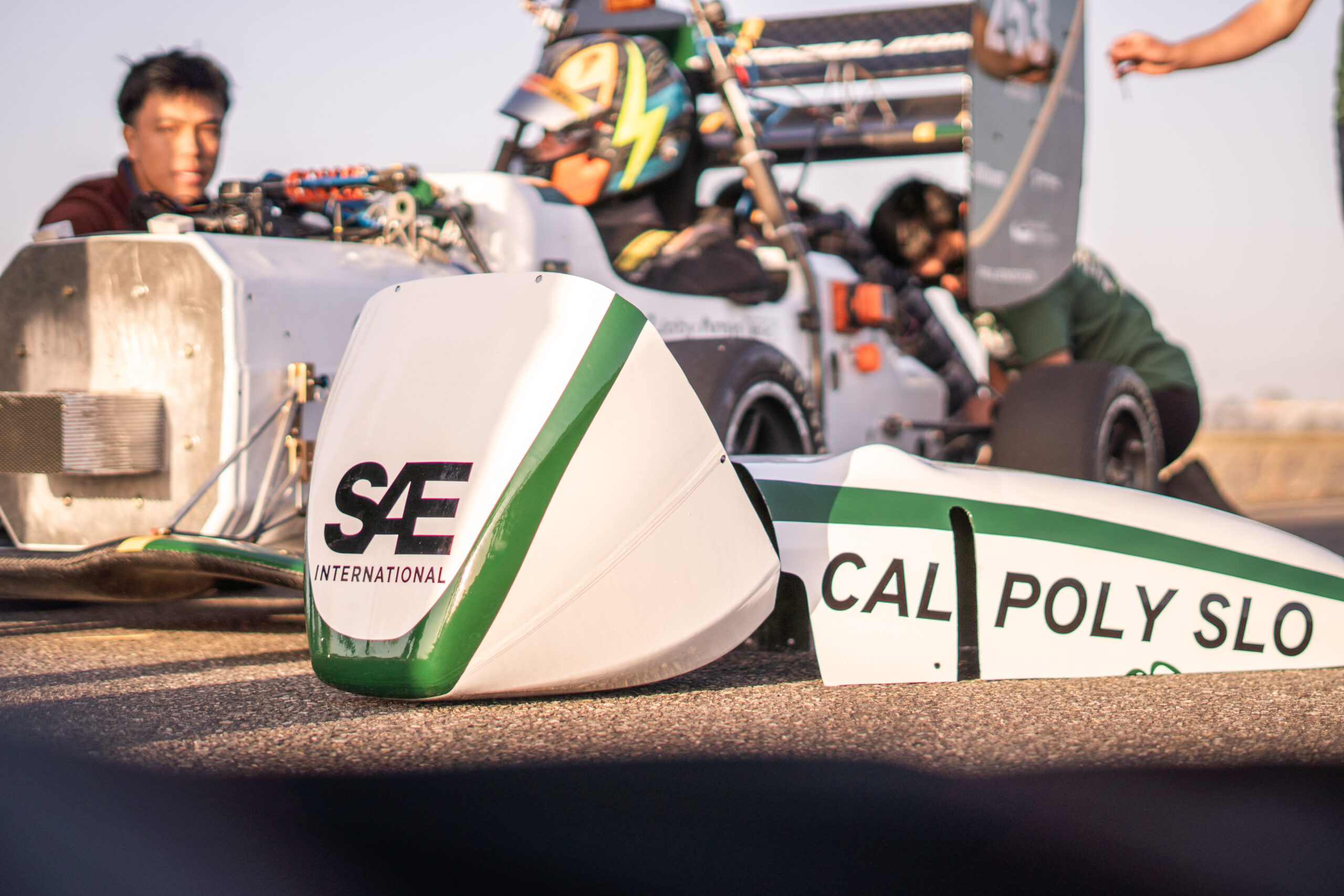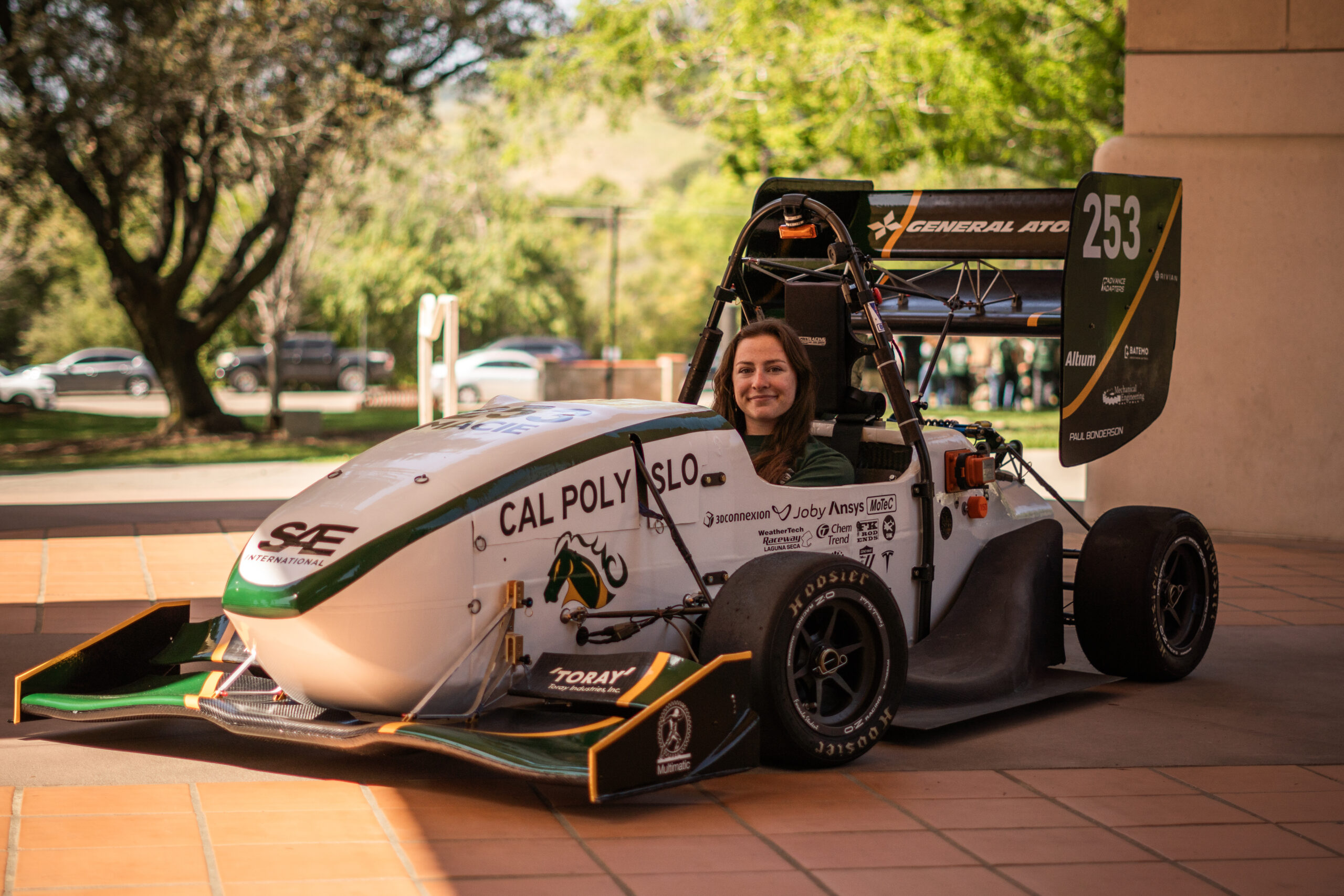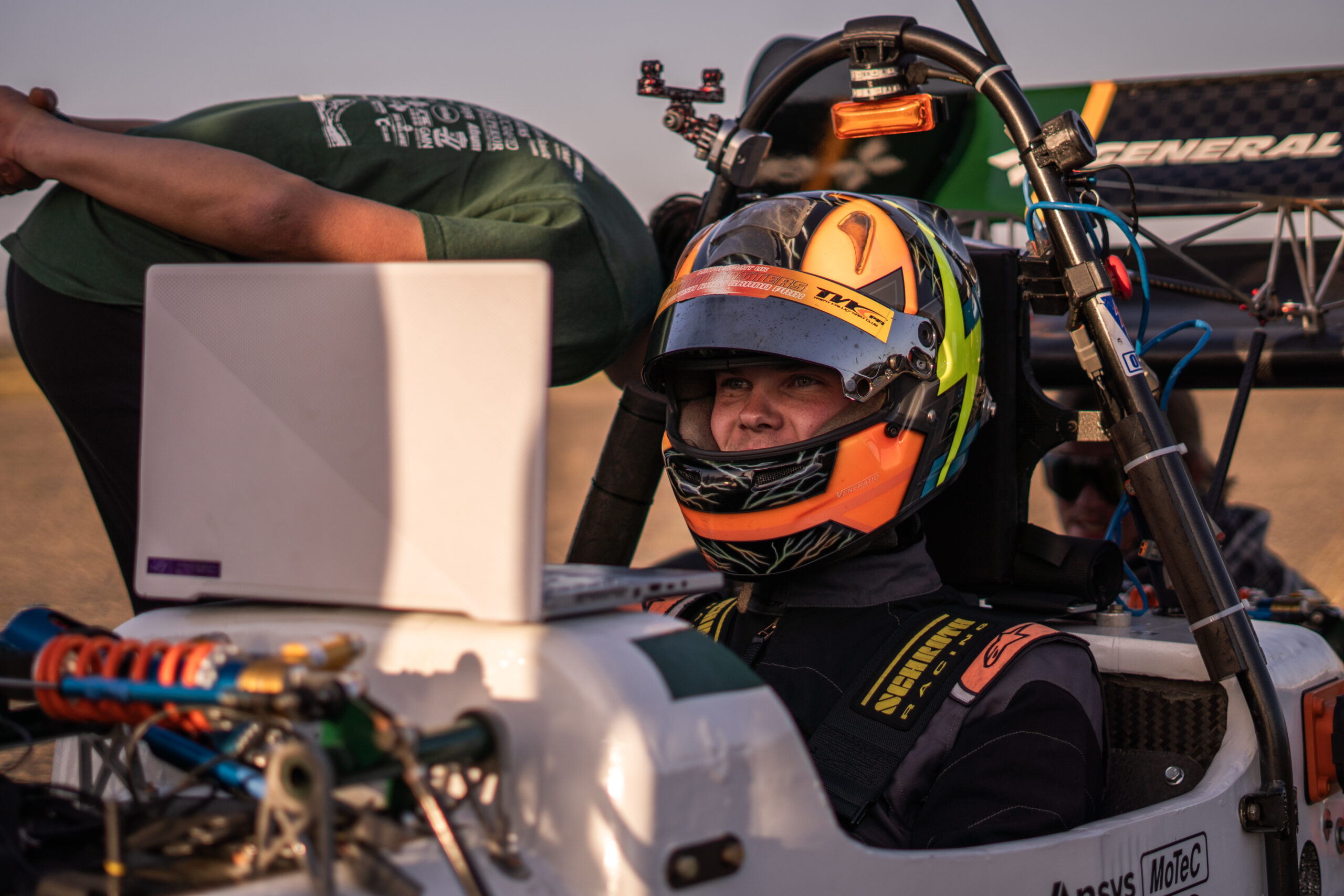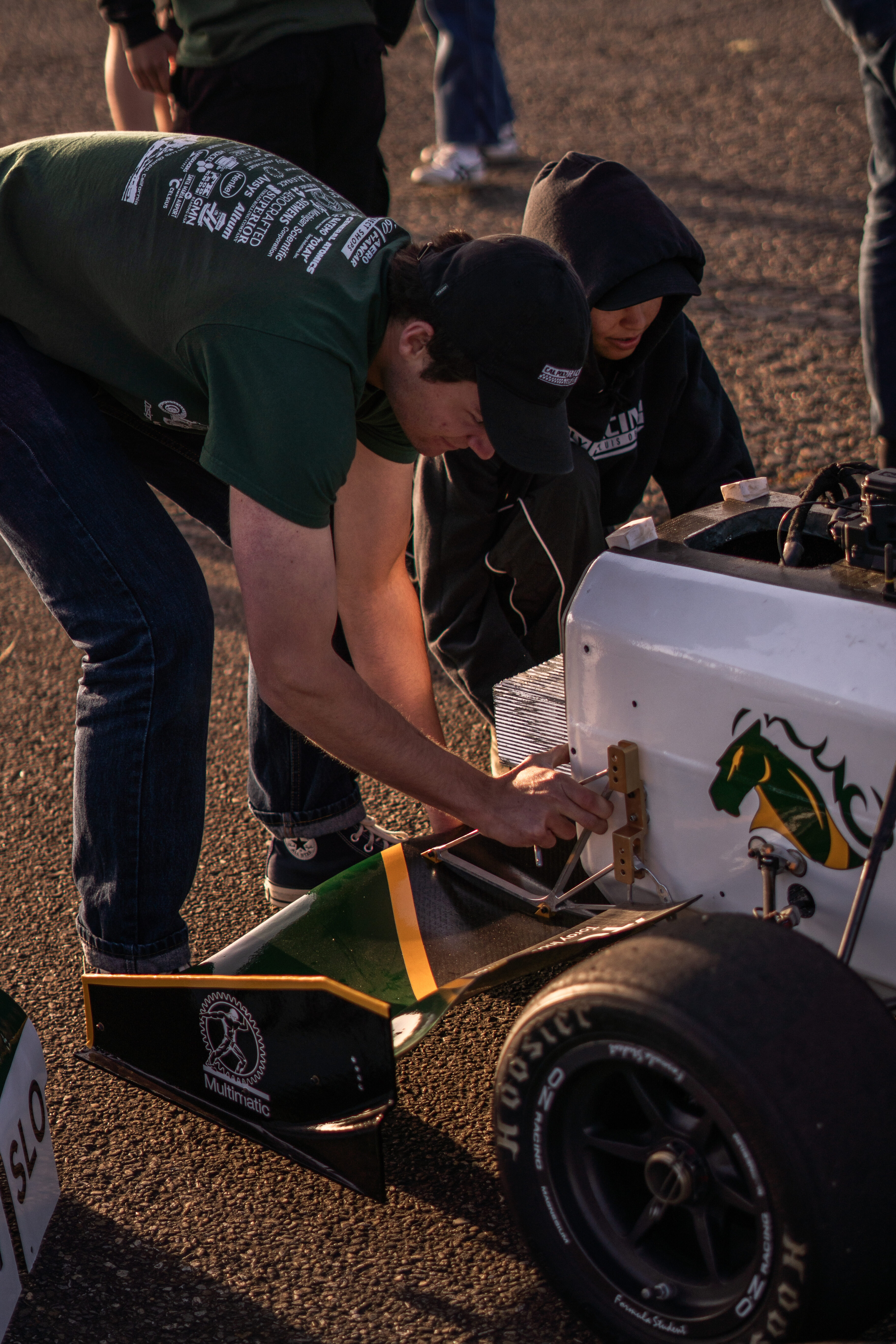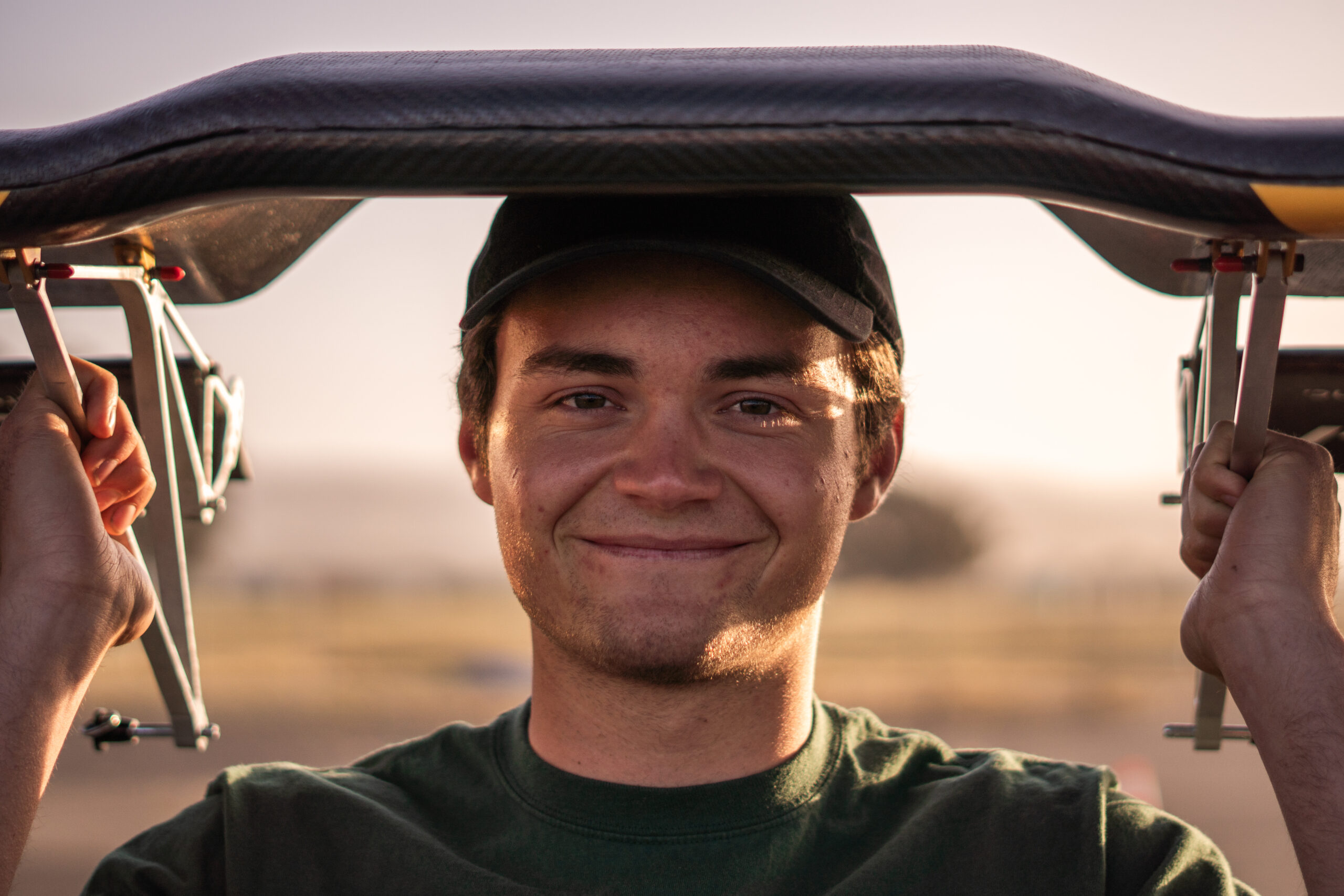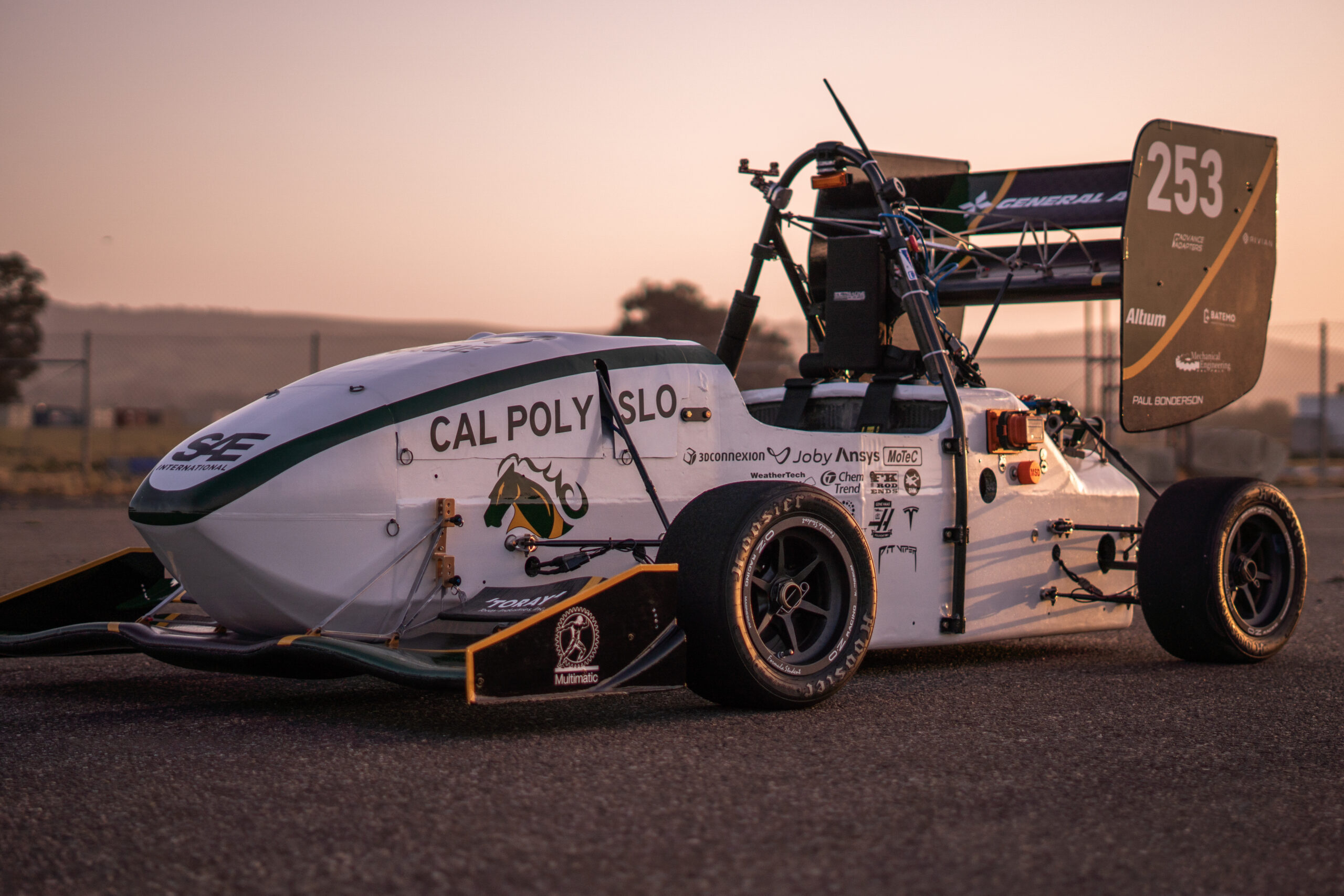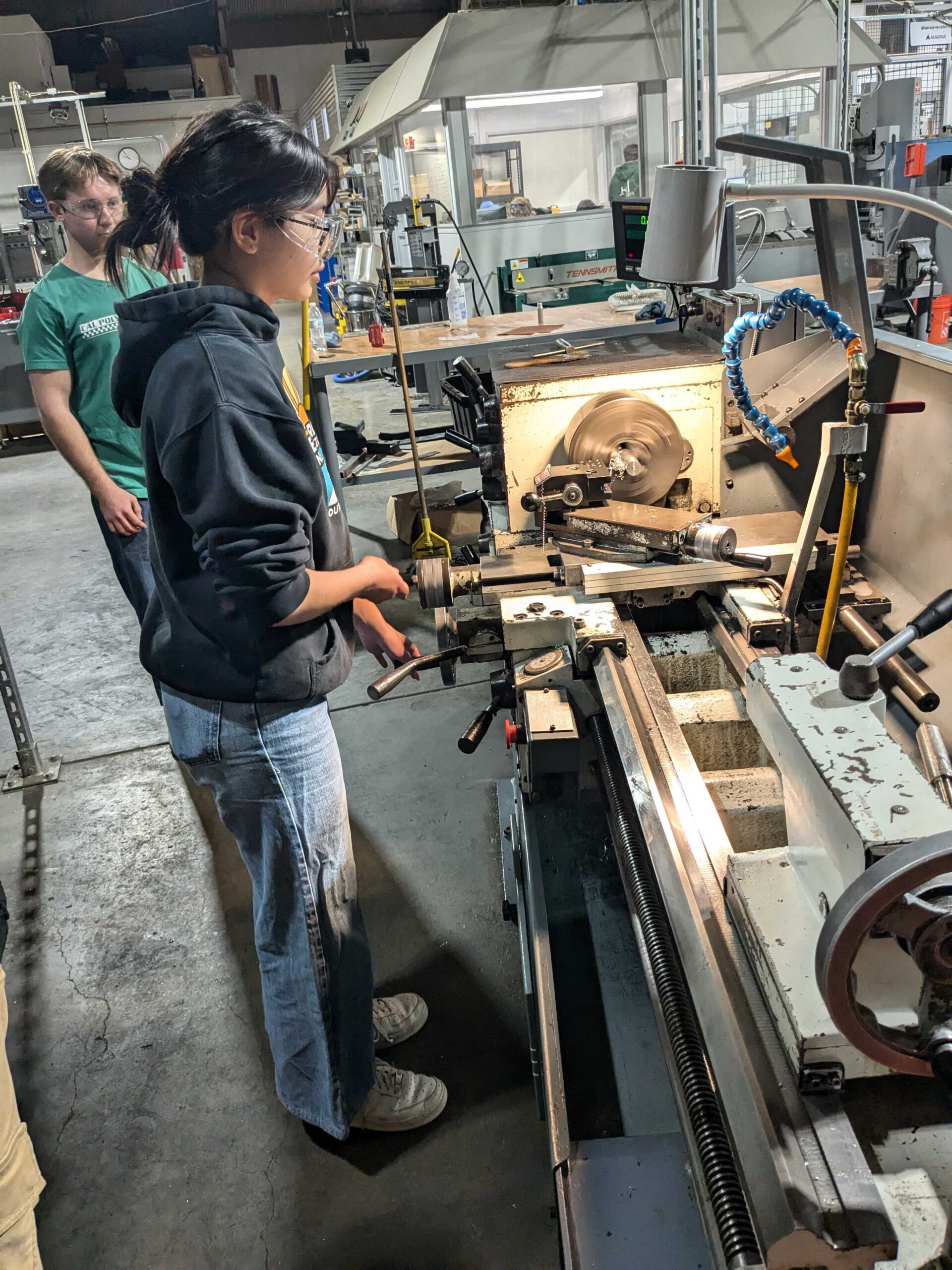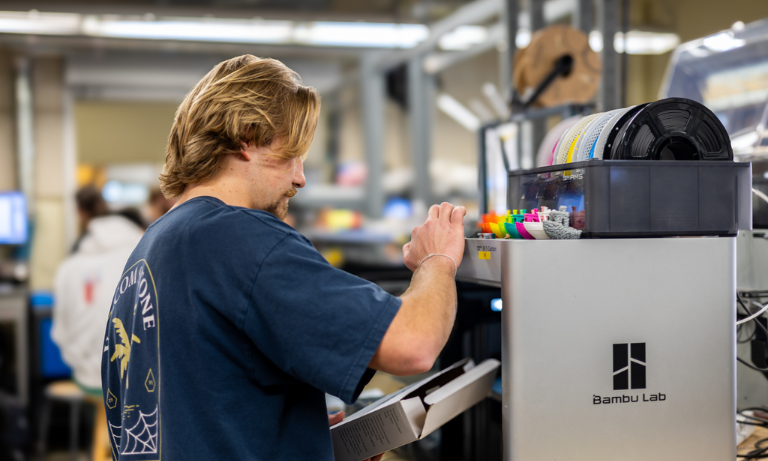When Cal Poly’s final combustion car crossed the finish line at last year’s Formula SAE competition in Michigan, it marked the end of an era: more than 30 years of roaring engines, hands-on innovation and a tradition few teams could match — building two cars every season.
“Combustion cars are the heart of racing,” said John O’Donnell, a third-year aerospace engineering student from Seattle. “But we had to look at where the competition was going and where we were headed.”
For Cal Poly Racing, it wasn’t just a farewell; it was a turning point. As the team closed the chapter on combustion, O’Donnell took on the role of team lead, helping the club navigate its next phase and supporting a pivotal decision to retire the combustion car and focus fully on electric.
“We were one of the only teams building both,” he said. “But if we wanted to be a top contender, we had to focus.”
The shift has already paid off. Cal Poly Racing is returning to Michigan for the Formula SAE Electric competition on June 17 with a more unified team, a refined car and renewed energy, all backed by its most rigorous testing season to date.
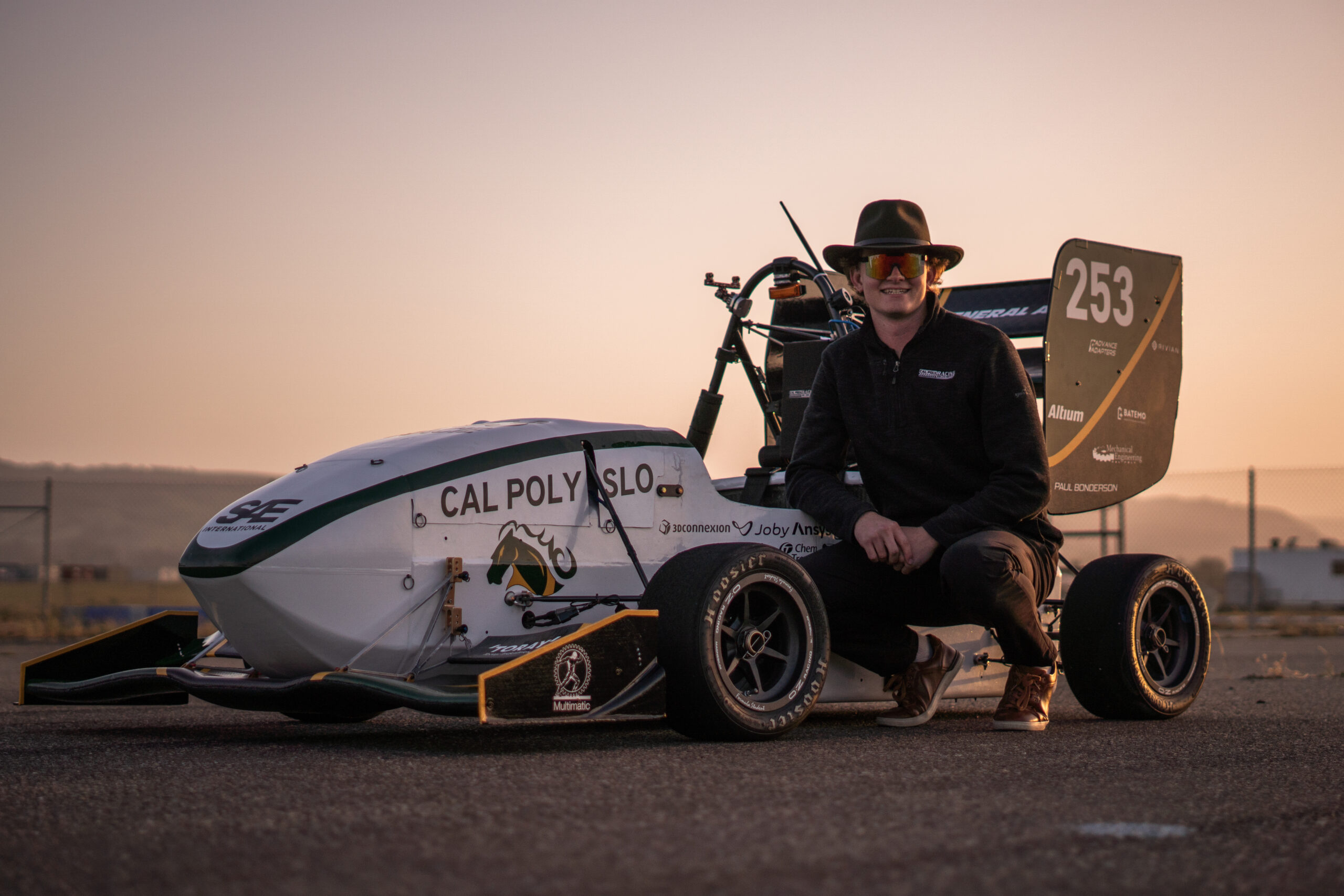
At first glance, Cal Poly’s 2025 electric vehicle doesn’t look radically different from last year’s. But under the carbon fiber shell, it’s smarter, more reliable and — perhaps most importantly — built with something the team hadn’t had in years: time.
“The more you can test, the better you do,” O’Donnell said. “That was our biggest goal this year: get the car driving early so we could really understand how it performed.”
Last year’s EV didn’t hit the track until May. This time, it rolled out by the end of February, allowing for months of steady testing with three to four sessions a week, primarily at the Santa Maria airport.
Much of that time went toward fixing a cooling issue that cost them a stronger finish in last year’s endurance race. A startup limitation delayed fan use, forcing the team to ease off mid-race to prevent the battery pack from overheating.
“This year, we focused on making sure the driver could turn the fans on or off,” O’Donnell said. “It sounds simple, but that made a huge difference.”
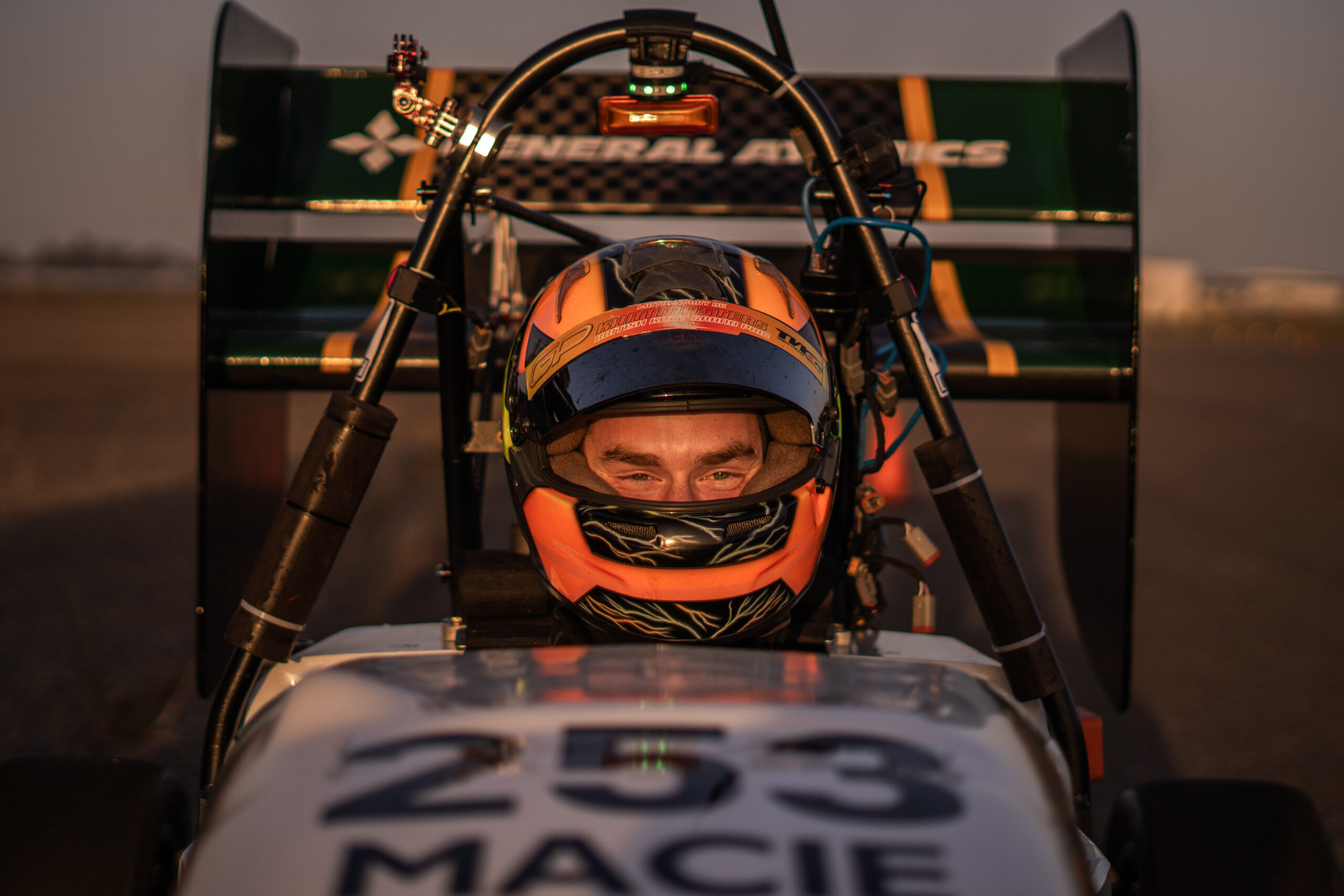
They also introduced a new aero kit and made refinements throughout the car, while continuing to use last year’s chassis mold — a typical choice, since the body is only overhauled every few years. But the most meaningful change wasn’t mechanical. It was cultural.
“My goal wasn’t just to improve the car,” O’Donnell said. “It was to create a culture that people wanted to be part of.”
That culture took shape through both engineering and camaraderie. The team gathered for bonfires and trivia nights, and took on “side quests” that ranged from eating a Costco hot dog, slice of pizza and chicken bake in under 30 minutes to petting a cow or diving into the ocean after sunset.
Those offbeat challenges helped build commitment in ways technical checklists couldn’t. Retention jumped from 36 percent the year before to 49 percent, and the freshman-heavy electronics team became a standout. Their work was so consistent, O’Donnell said, that “if you see one of them, you usually see all of them.”
Next week, the team will return to the Michigan International Speedway for Formula SAE Electric — this time with a sharper car and higher expectations.
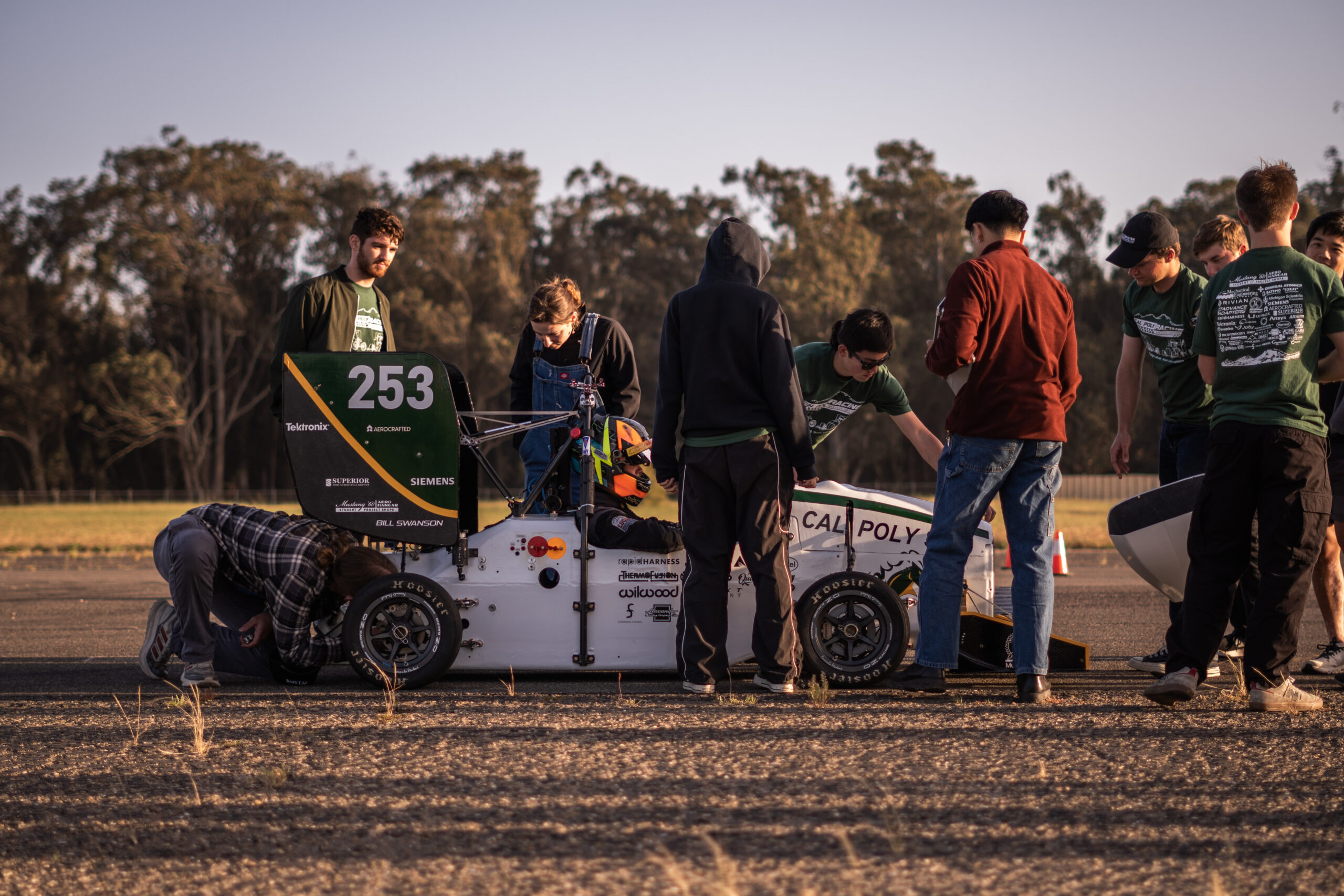
The five-day event includes both dynamic and static challenges. Alongside speed-focused contests like acceleration, skidpan and endurance, teams are judged on design, cost analysis and a business presentation. A strong showing across all categories is key to a top finish.
“Winning teams put a lot of effort into the static events,” O’Donnell said. “We’ve done well in design before, so hopefully we can take that even further.”
Last year, Cal Poly Racing placed fourth in design and completed the endurance race for the first time, a milestone that also revealed areas for improvement. With those addressed, the team now aims to clear inspections early and make the most of its time on track.
As final preparations wrap up, O’Donnell is already looking ahead — to both the competition and what comes next.
With most members returning, the club enters next season with a rare advantage: continuity. As O’Donnell steps into a second year as team lead, he hopes to build on this season’s momentum by strengthening the car, the crew and the experience for every student who joins.
“Becoming better engineers matters,” he said. “But we want to win too, and I believe we can do both.”
You can support Cal Poly Racing here.
By Emily Slater
